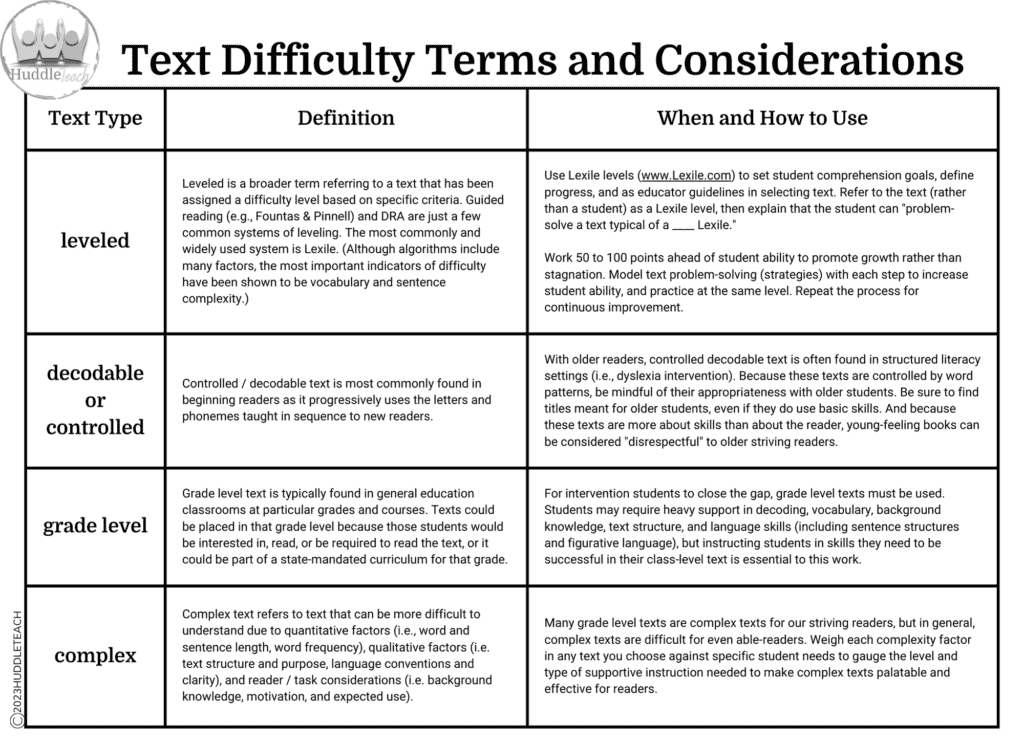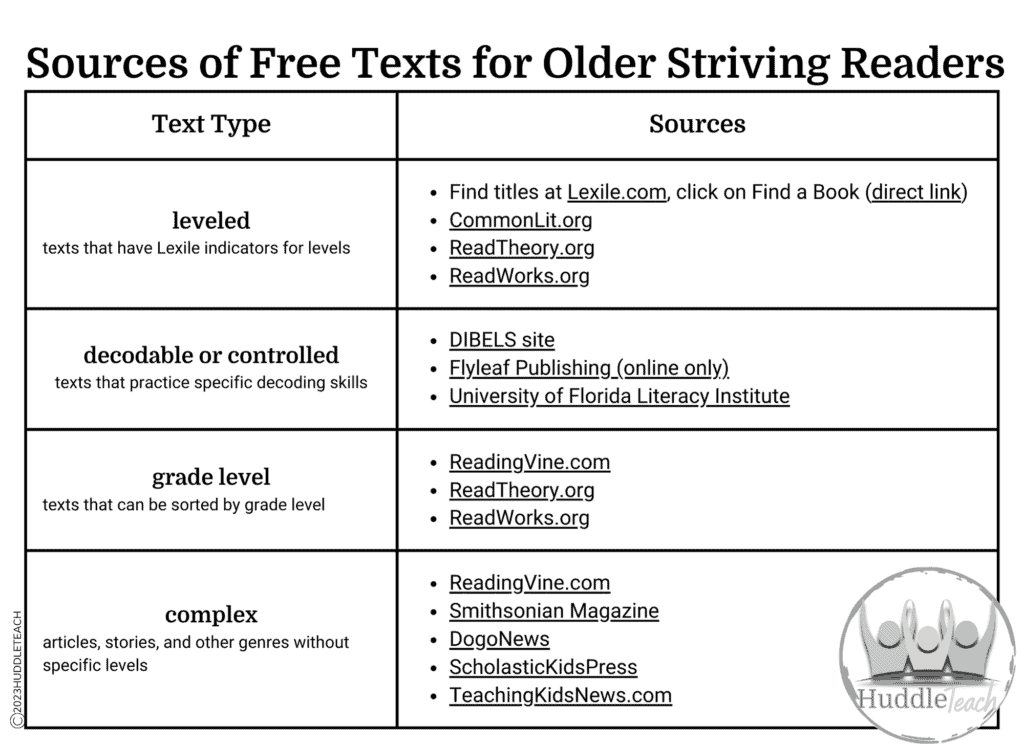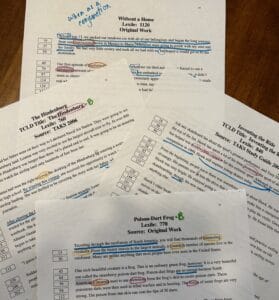Two steps to successful instruction happen before you meet with students

You’ve been doing it ALL with your readers – working on decoding, fluency, vocabulary, and comprehension, but unless students practice all of that in a way that meets their needs, your work will be for naught. But how do you choose the best texts for your striving readers and be prepared to meet their instructional needs?
Start with purpose
Is your text for instructional purposes, where you are modeling a strategy or skill? Or are you giving groups or individual students an opportunity to practice those reading strategies in a less guided way?
Here are some considerations as you choose the texts based on purpose:
1. Difficulty: leveled, decodable, grade level, or complex?
There are so many words to describe levels of text! Here’s a quick chart to explain the differences between them – and when and how to use each. These terms are delineated on the charts, but in reality, there is a large amount of crossover. Use this information to help you make decisions for instruction and practice!

2. SEL and cultural considerations
We would be remiss if we only discussed text selection in terms of measurable difficulty. Respectful text attends to students’ emotional needs as well. There are many qualitative factors that go into selecting a text, especially if motivation or other concerns exist. If texts that reflect equality, diversity, justice, and cultural relevancy are important to your school, district, families, and community, be sure to measure your text selection against additional indicators. Check out these forms for your use, or modify them as necessary to fit your needs:
3. Find texts to meet your need
One of the most difficult things is finding text that meets secondary students’ varied needs. And while there are many paid options, here are some free sources of text:

Prepare to use the text
When you have found texts for striving readers (or at least an idea of the text), here are your next steps:
1. Do a quick check
Don’t stress if you haven’t found The Perfect Text for student practice. Save the deep dive into the perfect text for your keystone lessons. When you just need students to work through a text, here’s a quick 5-point checklist to chose one that works quickly.

2. Watch for the roadblocks
Of course you should read any text all the way through before using it with students. (We, too, have been guilty of assuming that something will work, then finding out once we’re into the text that it is not appropriate for our students in one way or another.) Prepare intentionally once, and you’ll be able to set yourself for future success, too!
Make a master copy of the text, then grab colored pencils and/or sticky notes, and do some close reading of your own. Using a key like this helps you prepare a text and save your thoughts for future years, too!

Start creating a library of coded texts by saving your pre-reading work. Organize the marked texts by readability levels or by topic. Just a few semesters of this habit will create quite a few texts that are ready for instruction. Here are just a few of ours:
3. Frontload or Discovery: Decision points
As you plan your instruction with a piece of text, consider how much time you’ll spend frontloading information for student success and how much you’ll want students to discover on their own.
Read more about frontloading in this article by Regie Routman.
Over-frontloading means students may not have to think as much during the text; under-frontloading means students may struggle to understand.
For example, frontloading is most often a vocabulary strategy, but if you are teaching students to use context to determine word meanings, teach the context skill instead.
Be sure to frontload just enough to prepare students without doing the thinking for them, as explained in this article.
Be ready!
No matter what your purpose is, taking these few steps before using texts with striving readers means students – and you – are more likely to be successful!
Get all those resources and more by subscribing here.


